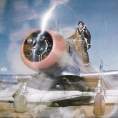Gear Up at KCVH on July 8, Third Major in 12 years For This Airplane
-
Members Online
- hammdo
- N204TA
- Skyland
- AspiringOwner
- warrenehc
- bigmo
- Scottknoll
- good2eat
- NickB
- Will.iam
- 201er
- DocTrussell
- Meshach
- Rogerg
- takair
- Niko182
- Lax291
- SuperSmash
- Medicpilot
- Matthew P
- dzeleski
- Joshua Blackh4t
- Bob Weber
- Tmooney
- shawnd
- exM20K
- Justin Schmidt
- TCC
- alexz
- snowman
- David AD
- BRBENNETT
- Shadrach
- Magnus
- rickseeman


Recommended Posts
Join the conversation
You can post now and register later. If you have an account, sign in now to post with your account.